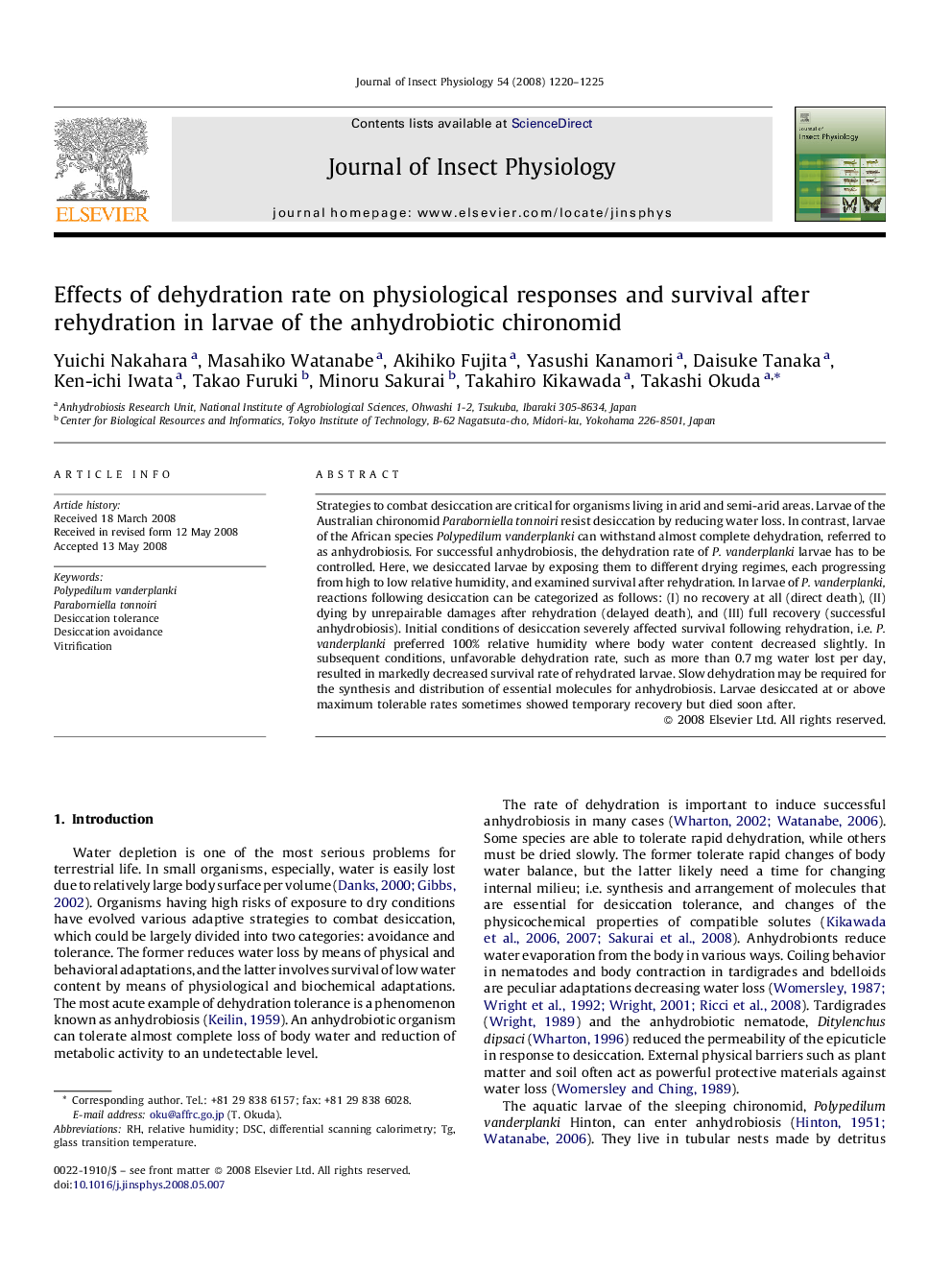| Article ID | Journal | Published Year | Pages | File Type |
|---|---|---|---|---|
| 2841194 | Journal of Insect Physiology | 2008 | 6 Pages |
Strategies to combat desiccation are critical for organisms living in arid and semi-arid areas. Larvae of the Australian chironomid Paraborniella tonnoiri resist desiccation by reducing water loss. In contrast, larvae of the African species Polypedilum vanderplanki can withstand almost complete dehydration, referred to as anhydrobiosis. For successful anhydrobiosis, the dehydration rate of P. vanderplanki larvae has to be controlled. Here, we desiccated larvae by exposing them to different drying regimes, each progressing from high to low relative humidity, and examined survival after rehydration. In larvae of P. vanderplanki, reactions following desiccation can be categorized as follows: (I) no recovery at all (direct death), (II) dying by unrepairable damages after rehydration (delayed death), and (III) full recovery (successful anhydrobiosis). Initial conditions of desiccation severely affected survival following rehydration, i.e. P. vanderplanki preferred 100% relative humidity where body water content decreased slightly. In subsequent conditions, unfavorable dehydration rate, such as more than 0.7 mg water lost per day, resulted in markedly decreased survival rate of rehydrated larvae. Slow dehydration may be required for the synthesis and distribution of essential molecules for anhydrobiosis. Larvae desiccated at or above maximum tolerable rates sometimes showed temporary recovery but died soon after.
